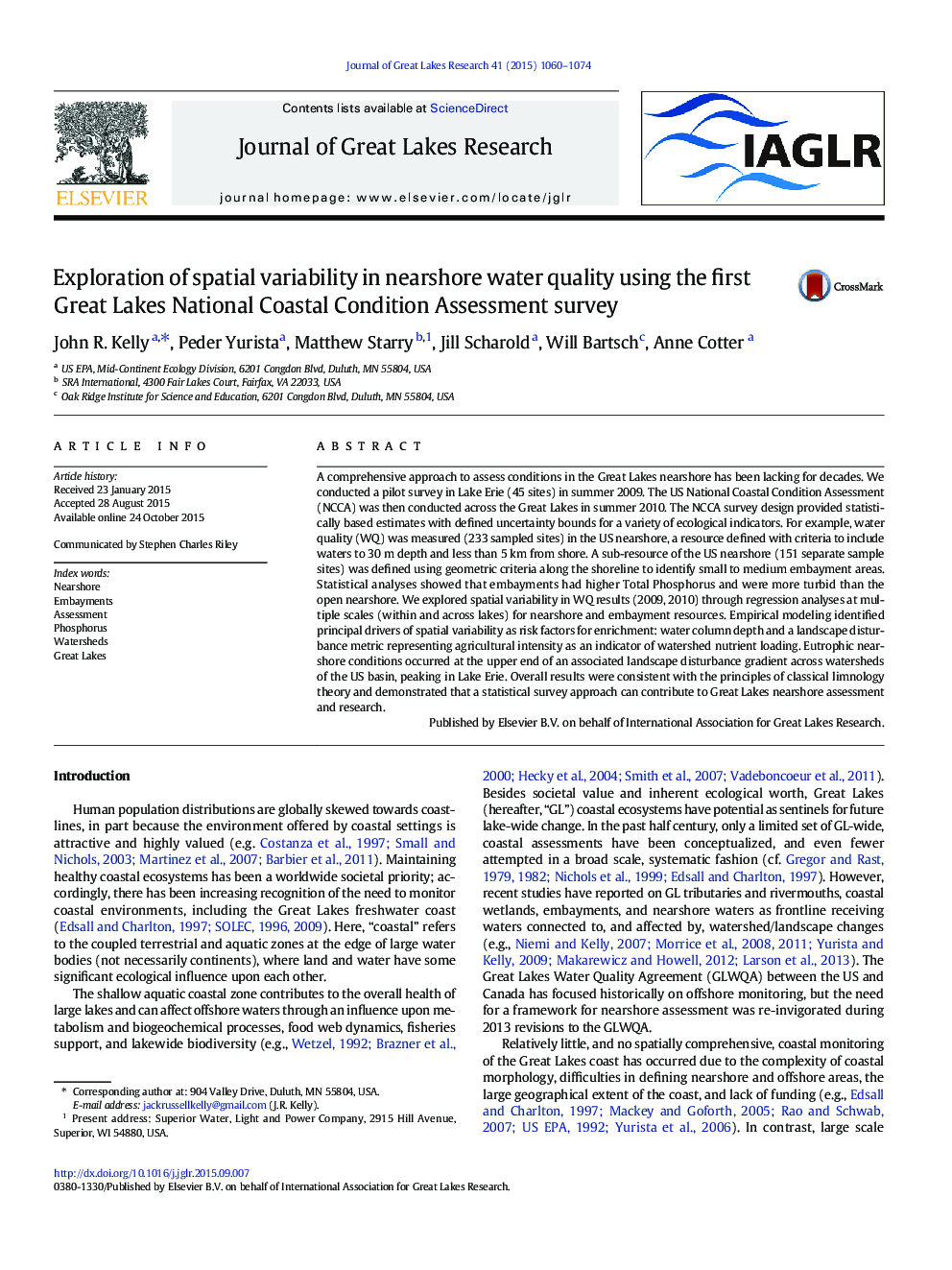| Article ID | Journal | Published Year | Pages | File Type |
|---|---|---|---|---|
| 6304842 | Journal of Great Lakes Research | 2015 | 15 Pages |
Abstract
A comprehensive approach to assess conditions in the Great Lakes nearshore has been lacking for decades. We conducted a pilot survey in Lake Erie (45 sites) in summer 2009. The US National Coastal Condition Assessment (NCCA) was then conducted across the Great Lakes in summer 2010. The NCCA survey design provided statistically based estimates with defined uncertainty bounds for a variety of ecological indicators. For example, water quality (WQ) was measured (233 sampled sites) in the US nearshore, a resource defined with criteria to include waters to 30Â m depth and less than 5Â km from shore. A sub-resource of the US nearshore (151 separate sample sites) was defined using geometric criteria along the shoreline to identify small to medium embayment areas. Statistical analyses showed that embayments had higher Total Phosphorus and were more turbid than the open nearshore. We explored spatial variability in WQ results (2009, 2010) through regression analyses at multiple scales (within and across lakes) for nearshore and embayment resources. Empirical modeling identified principal drivers of spatial variability as risk factors for enrichment: water column depth and a landscape disturbance metric representing agricultural intensity as an indicator of watershed nutrient loading. Eutrophic nearshore conditions occurred at the upper end of an associated landscape disturbance gradient across watersheds of the US basin, peaking in Lake Erie. Overall results were consistent with the principles of classical limnology theory and demonstrated that a statistical survey approach can contribute to Great Lakes nearshore assessment and research.
Related Topics
Physical Sciences and Engineering
Earth and Planetary Sciences
Earth and Planetary Sciences (General)
Authors
John R. Kelly, Peder Yurista, Matthew Starry, Jill Scharold, Will Bartsch, Anne Cotter,
